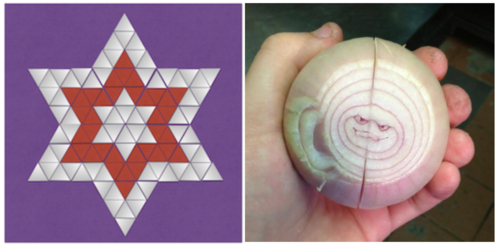Bwahahahahahahaha
Probability
Level
1
 How many white triangles would be needed to make the
layer of this tiling pattern?
How many white triangles would be needed to make the
layer of this tiling pattern?
The answer is 24012.
This section requires Javascript.
You are seeing this because something didn't load right. We suggest you, (a) try
refreshing the page, (b) enabling javascript if it is disabled on your browser and,
finally, (c)
loading the
non-javascript version of this page
. We're sorry about the hassle.
Each layer adds 4 triangles to the total in each corner, and it starts with 2. So at layer n, you have 2+4 (n-1) triangles on any corner and multiply that by 6 for the whole layer. In this case, n is 1000, so you have 6 [2+4(1000)] = 24012.